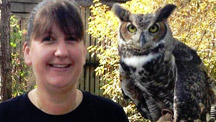Just like January, I birded at Gemini Springs 15 times last month. I wanted to complete the February eBirder of the Month Challenge by submitting 20 checklists from a single patch, but I didn’t make it. About halfway through the month I realized the challenge was making me antsy so I just let it go.
I recorded 77 species at the park for the month. Previous February totals: 73 in 2014; 74 in 2013; and 60 in 2012. The complete list for February 2015 is at the end of this post.
For my green list, I had 87 species for the month. I added 9 species to my year’s green list, including Spotted Sandpiper and Greater Yellowlegs at Konomac Lake, Merlin and Field Sparrow at Gemini Springs, and Eastern Towhee at Audubon Park.
Here are some photographic highlights of my February 2015 green birding in southwest Volusia County.
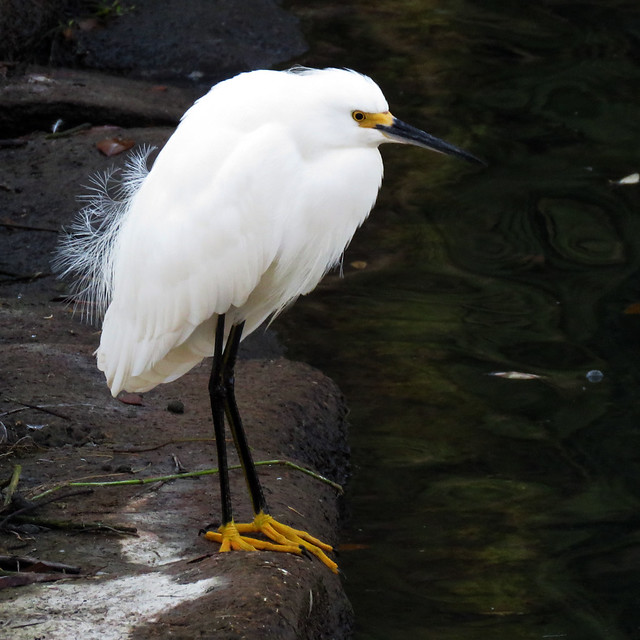
Snowy Egret at Gemini Springs | 03 February 2015
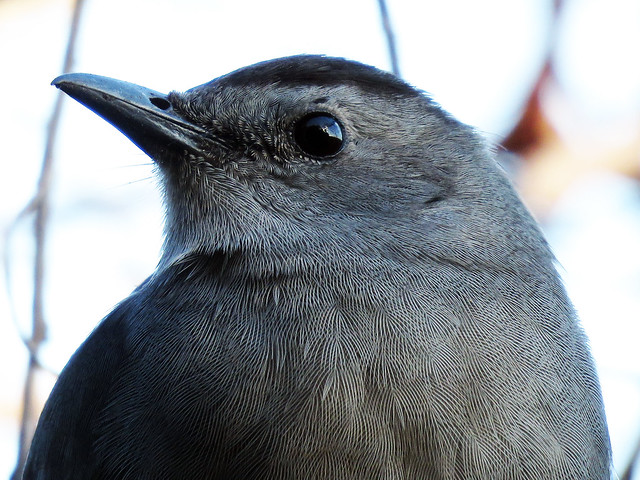
Confiding Gray Catbird at Gemini Springs | 06 February 2015
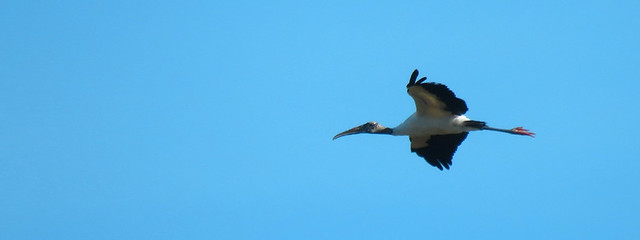
Wood Stork flying over Gemini Springs | 06 February 2015
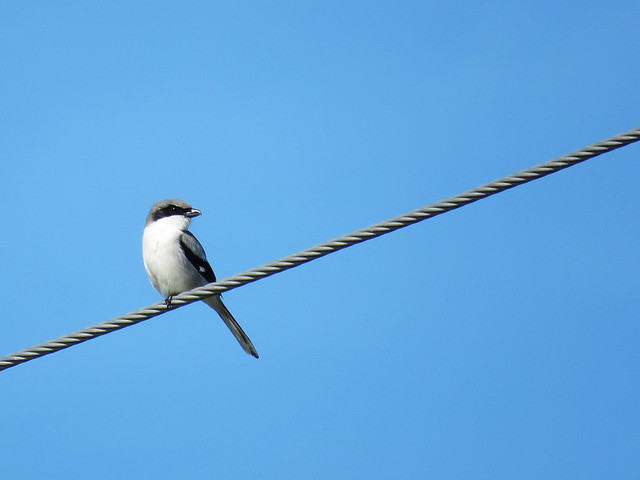
Loggerhead Shrike at Konomac Lake | 07 February 2015
I hear Sandhill Cranes from time to time from Gemini Springs, and I’ve seen them fly over a handful of times, but I think the sighting on February 9th this year was the first time I have seen these birds actively feeding at the park. It was nice to see this group of four that ended up being a one-day wonder.
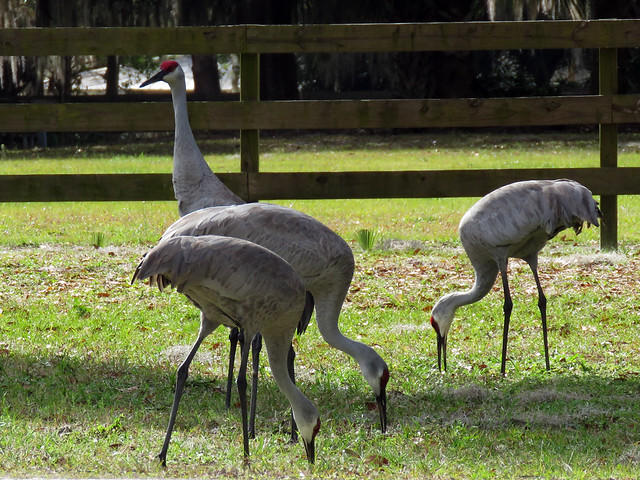
Sandhill Cranes at Gemini Springs | 09 February 2015

Chipping Sparrow at Gemini Springs | 15 February 2015

Eastern Phoebe at Gemini Springs | 16 February 2015
On the 16th I noticed a Virginia Opossum walking along a path next to the dog park at Gemini Springs. I waited for it to have a good lead and then I followed its trail — walking a little part of the park I never had before. Thanks for the discovery, opo! 🙂
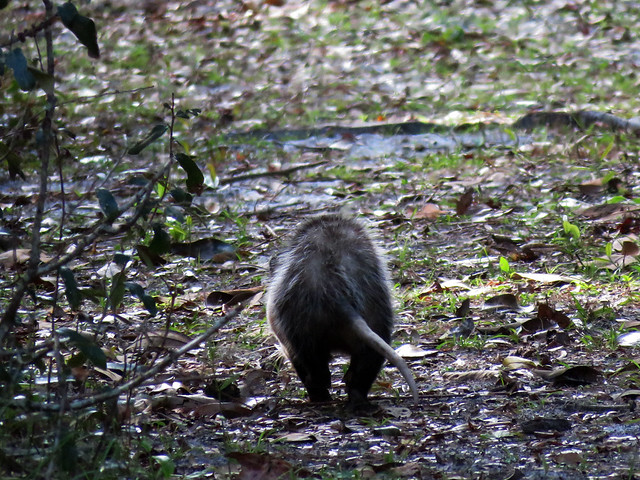
Virginia Opossum at Gemini Springs | 16 February 2015
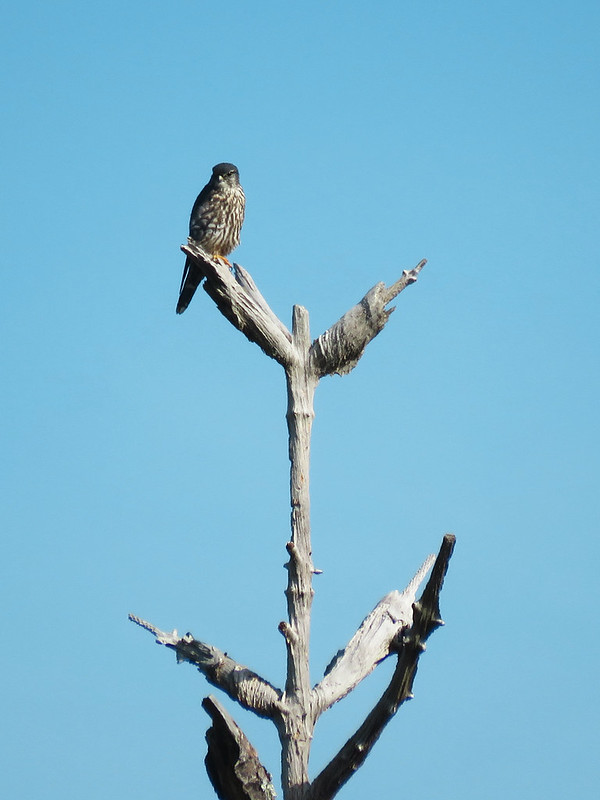
Merlin perched over the sinkhole at Gemini Springs | 16 February 2015

White-tailed Deer at Audubon Park | 20 February 2015
Mallards hanging out in the flooded sinkhole were a surprise during the month. I first saw them on the 11th. I recorded them a few more times before the month was over. I already got a kick out of seeing waders feeding in the flooded area, but watching ducks swim around above a sidewalk I’ve walked hundreds of times was somewhat unreal.

Mallards with Snowy Egret in the sinkhole at Gemini Springs | 22 February 2015
It was a good month, but I’m excited for the migrants that will be passing through in the coming weeks. The hot summer that follows, not so much. 😉 Warblers, bring ’em on!!
Gemini Springs bird list, February 2015
Mallard (Domestic type) – Anas platyrhynchos
Lesser Scaup – Aythya affinis
Pied-billed Grebe – Podilymbus podiceps
Wood Stork – Mycteria americana
Double-crested Cormorant – Phalacrocorax auritus
Anhinga – Anhinga anhinga
Great Blue Heron – Ardea herodias
Great Egret – Ardea alba
Snowy Egret – Egretta thula
Little Blue Heron – Egretta caerulea
Tricolored Heron – Egretta tricolor
Cattle Egret – Bubulcus ibis
Green Heron – Butorides virescens
White Ibis – Eudocimus albus
Glossy Ibis – Plegadis falcinellus
Black Vulture – Coragyps atratus
Turkey Vulture – Cathartes aura
Osprey – Pandion haliaetus
Northern Harrier – Circus cyaneus
Sharp-shinned Hawk – Accipiter striatus
Bald Eagle – Haliaeetus leucocephalus
Red-shouldered Hawk – Buteo lineatus
Red-tailed Hawk – Buteo jamaicensis
Sora – Porzana carolina
Common Gallinule – Gallinula galeata
American Coot – Fulica americana
Limpkin – Aramus guarauna
Sandhill Crane – Grus canadensis
Ring-billed Gull – Larus delawarensis
Caspian Tern – Hydroprogne caspia
Mourning Dove – Zenaida macroura
Belted Kingfisher – Megaceryle alcyon
Red-bellied Woodpecker – Melanerpes carolinus
Yellow-bellied Sapsucker – Sphyrapicus varius
Downy Woodpecker – Picoides pubescens
Northern Flicker – Colaptes auratus
Pileated Woodpecker – Dryocopus pileatus
American Kestrel – Falco sparverius
Merlin – Falco columbarius
Eastern Phoebe – Sayornis phoebe
Loggerhead Shrike – Lanius ludovicianus
White-eyed Vireo – Vireo griseus
Blue-headed Vireo – Vireo solitarius
Blue Jay – Cyanocitta cristata
American Crow – Corvus brachyrhynchos
Fish Crow – Corvus ossifragus
Tree Swallow – Tachycineta bicolor
Tufted Titmouse – Baeolophus bicolor
House Wren – Troglodytes aedon
Carolina Wren – Thryothorus ludovicianus
Blue-gray Gnatcatcher – Polioptila caerulea
Ruby-crowned Kinglet – Regulus calendula
Hermit Thrush – Catharus guttatus
American Robin – Turdus migratorius
Gray Catbird – Dumetella carolinensis
Brown Thrasher – Toxostoma rufum
Northern Mockingbird – Mimus polyglottos
Cedar Waxwing – Bombycilla cedrorum
Ovenbird – Seiurus aurocapilla
Orange-crowned Warbler – Oreothlypis celata
Common Yellowthroat – Geothlypis trichas
Northern Parula – Setophaga americana
Palm Warbler – Setophaga palmarum
Pine Warbler – Setophaga pinus
Yellow-rumped Warbler – Setophaga coronata
Yellow-throated Warbler – Setophaga dominica
Prairie Warbler – Setophaga discolor
Chipping Sparrow – Spizella passerina
Field Sparrow – Spizella pusilla
Savannah Sparrow – Passerculus sandwichensis
Swamp Sparrow – Melospiza georgiana
Northern Cardinal – Cardinalis cardinalis
Painted Bunting – Passerina ciris
Red-winged Blackbird – Agelaius phoeniceus
Common Grackle – Quiscalus quiscula
Boat-tailed Grackle – Quiscalus major
American Goldfinch – Spinus tristis



